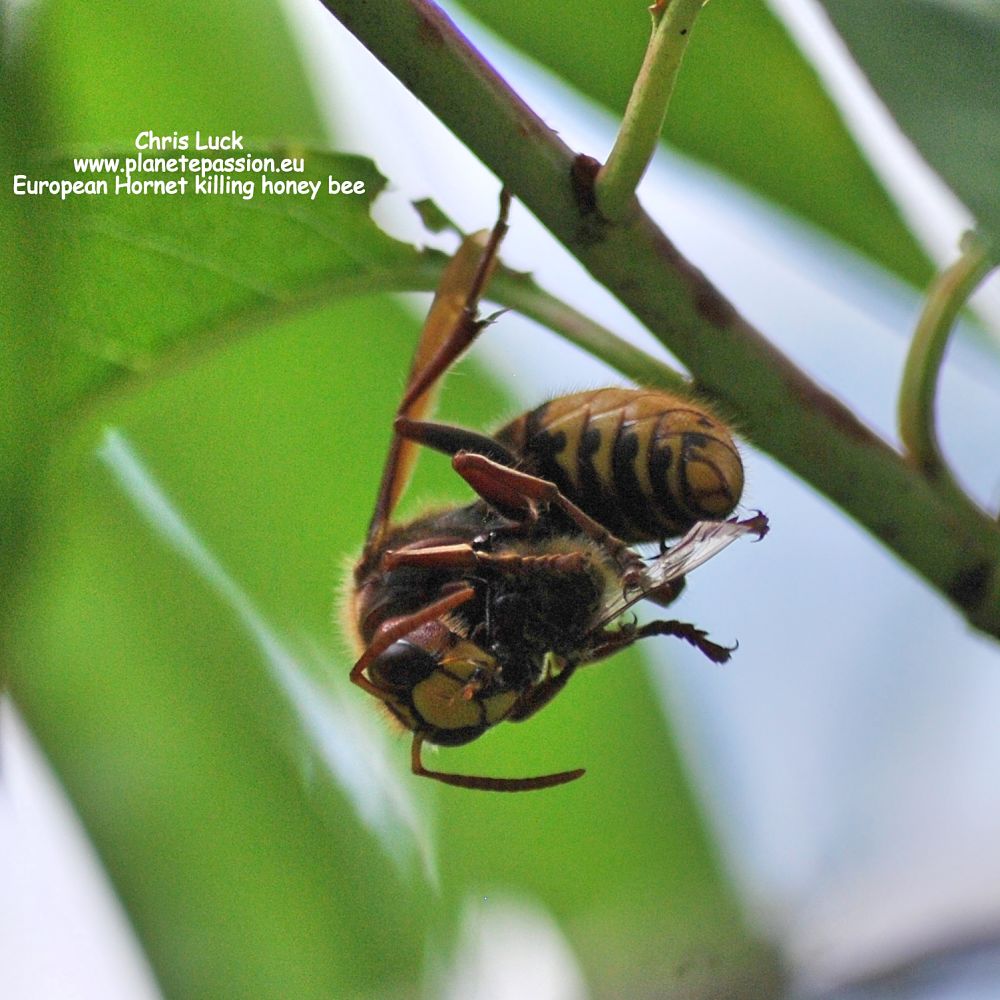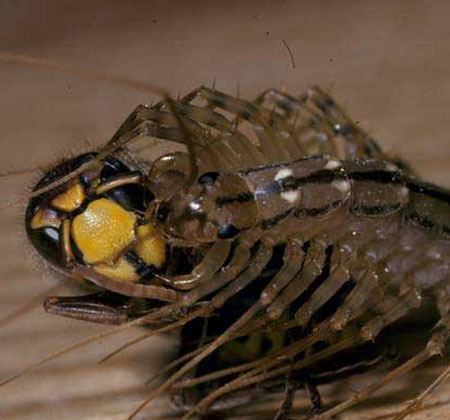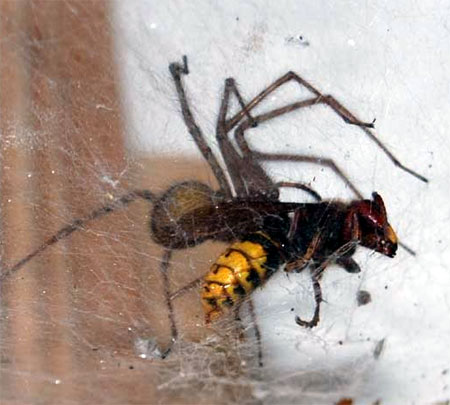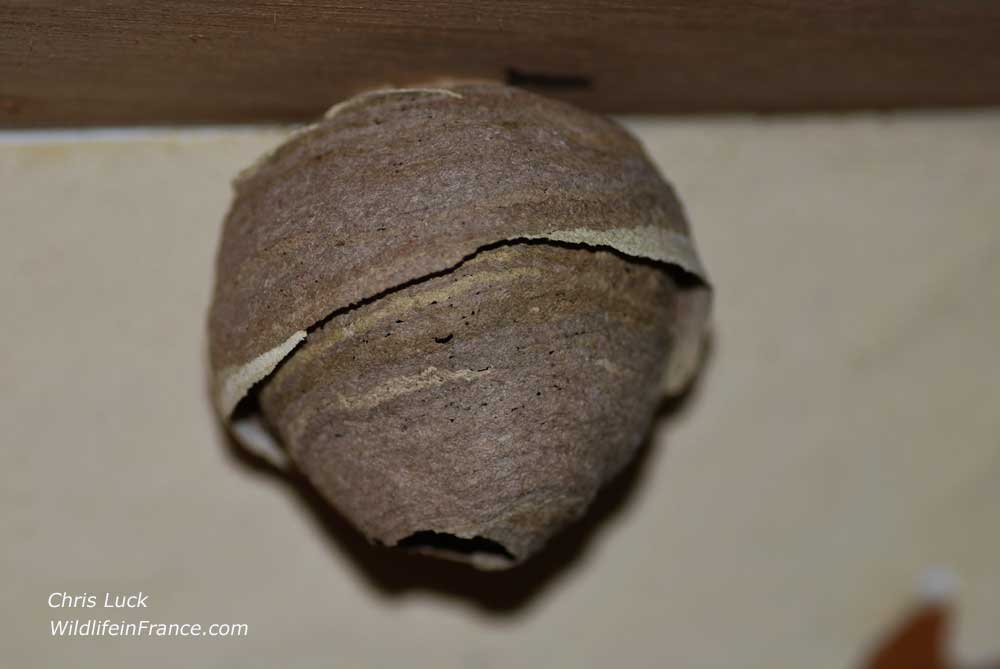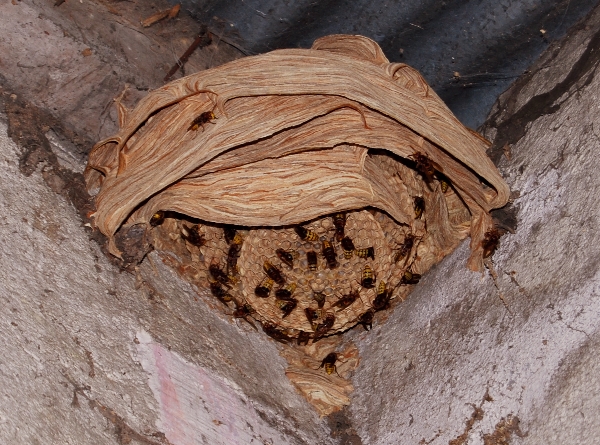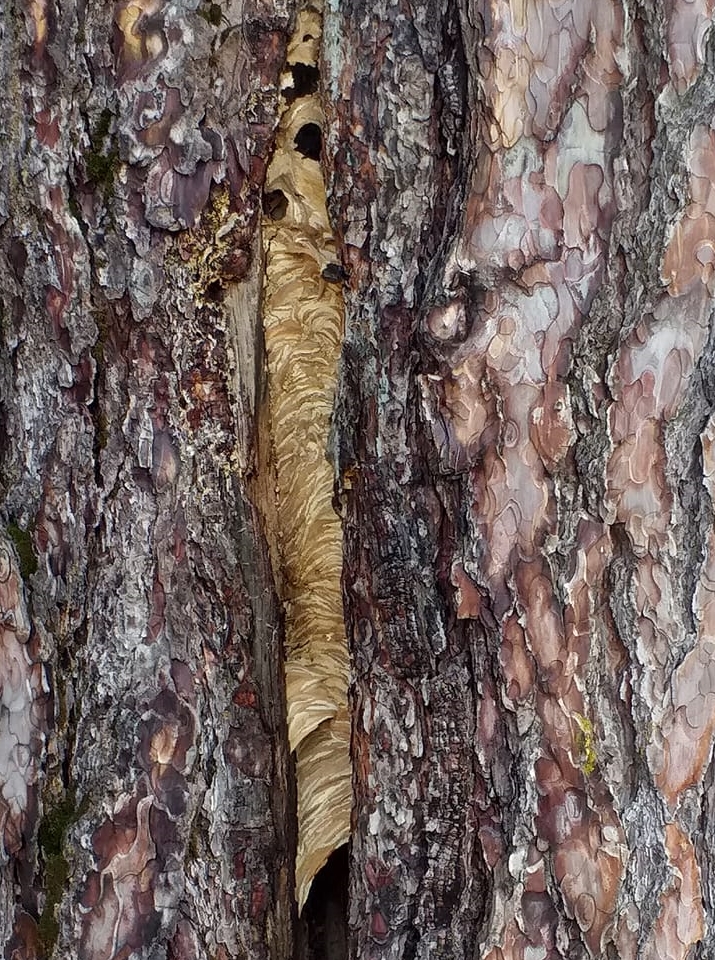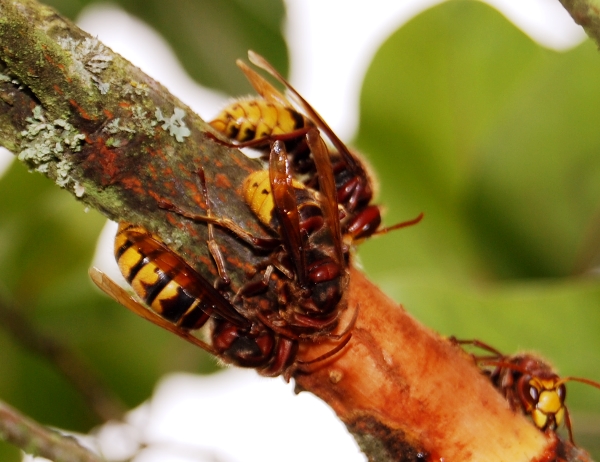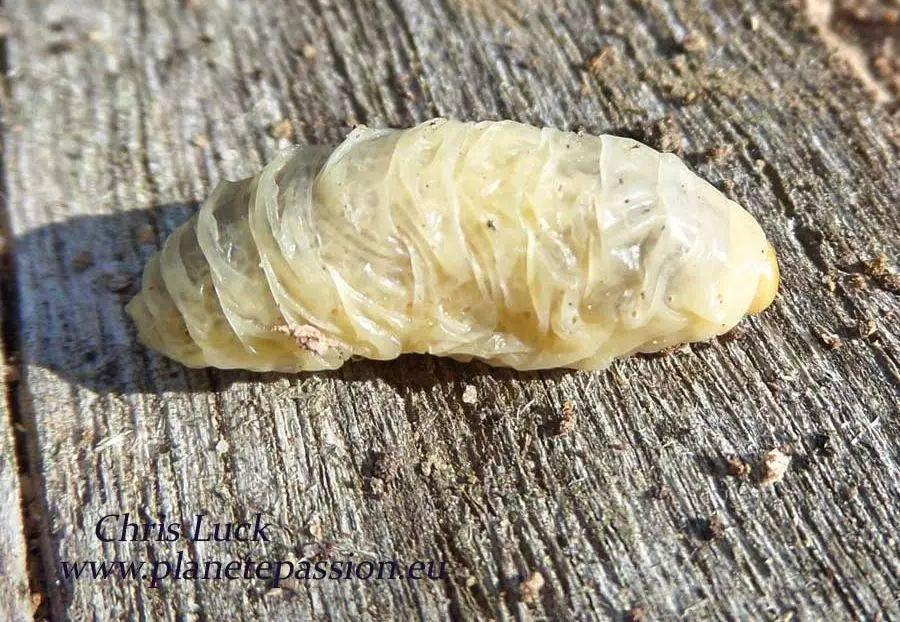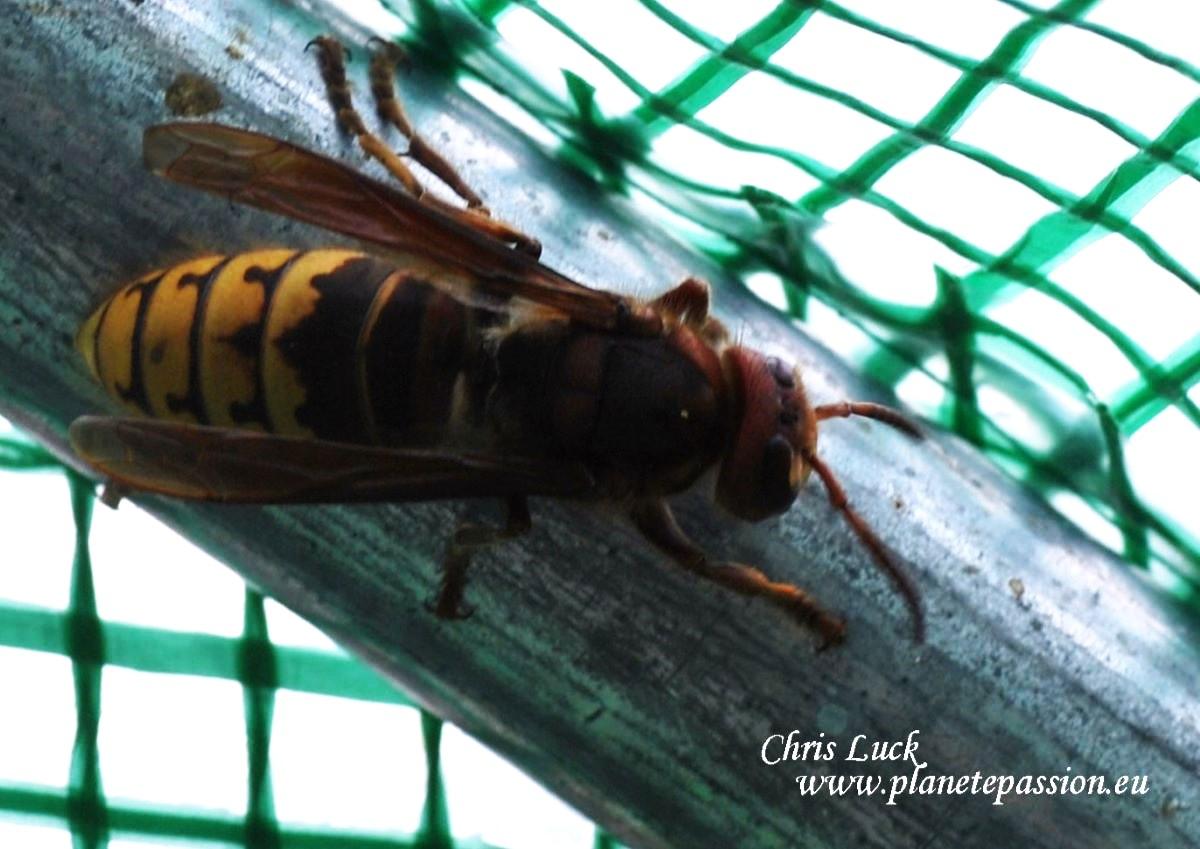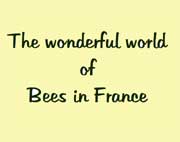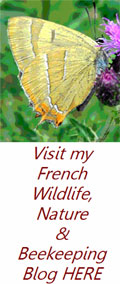European Hornet
Vespa crabro
Frelon or Guêpe frelon or Guichard
This is the largest European “wasp”.
Queens can be up to 3.5 centimetres long and are often more boldly marked, workers and males are between 1.8 and 2.5 centimetres long.
They are essentially a predator of a large variety of other insects, including bees and other wasps to feed their larvae with small regurgitated pellets. It's later in the year that we see more of them as they increasingly eat ripe fruit, apples, pears, grapes, in fact anything with high sugar content. They do not pose a greater threat to Honey bee colonies than any other native social wasp and will only be a serious concern to a honeybee colony that is already extremely weak or failing. This should be self evident as they have lived alongside each other for many thousands of years.
they are also food for a number of species
The nest
Day and night
Hornets will “work” up to 1.5 kilometres from the nest and although a colony can have up to 300 individuals it is normally far fewer than this number. Their main period of activity is during daylight but night flying can take place and they are frequently attracted to lights.
As is the case with all social wasps, (Vespidea), the entire active colony disappears in late autumn or early winter. The existing queen, the males and workers all die leaving only the newly fertilised Queens to disperse and live through the winter in a sheltered place to form the new colonies the following spring. As with other social Wasps and Bumblebees that share this behavioral charecteristic very few actually successfully create viable colonies the following year.
Are hornets dangerous for people?
When can they sting?
There are of course situations in which they, either singly or collectively, will attack and sting, this is (logically) when they feel that either they or their nest are under threat, so you should never flap your arms or anything else around at them or crash around by a nest. Of course if you sit or put your hand on one it’s likely to sting.
To conclude, you are only really at risk if you are a person that reacts badly to stings or if you should receive multiple stings, which is the same as it would be with any other wasp or bee.
It is probable that the greater availability and use of modern insecticides is having an adverse effect on overall population levels and where possible the nests should be left alone. In some European countries such as Germany and Austria they are a protected species.
